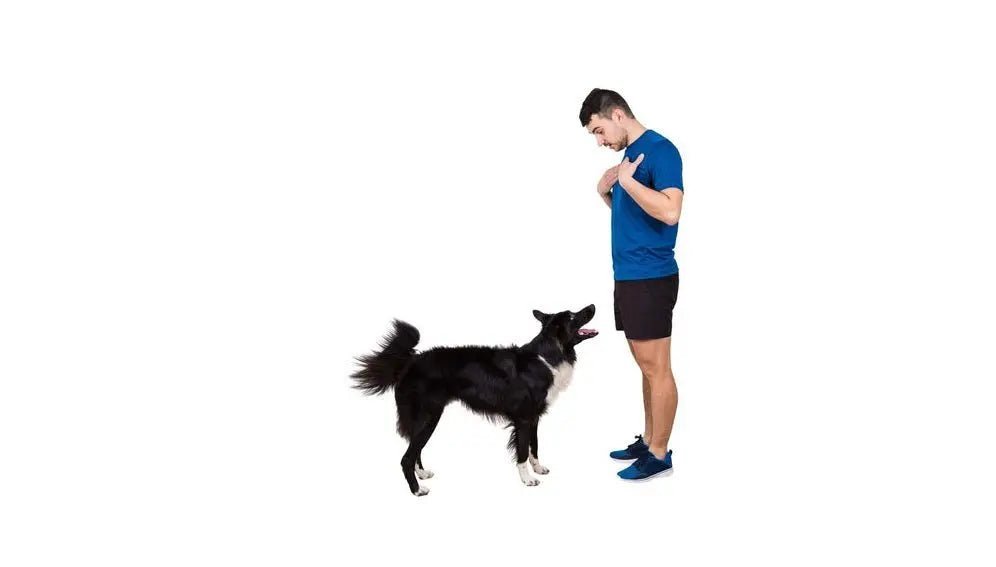
Successful Dog Training
Train Smart, Train Positive: Techniques for Successful Dog Training at Any Age

Bringing home a new puppy is an exciting and joyful experience. However, along with the cuteness and playfulness, there comes a responsibility to train your puppy to become a well-behaved companion. One of the most influential and humane methods of training is positive reinforcement. In this article, we will explore the benefits and techniques of positive reinforcement training. By implementing these methods, you can establish a strong bond with your puppy while teaching them essential commands and fostering good behavior.
Understanding the importance of positive reinforcement training for your new puppy
Positive reinforcement training rewards desired behaviors rather than punishing unwanted ones. This approach helps your puppy understand what is expected of them and creates a positive association with training sessions. Unlike punishment-based methods, positive reinforcement training focuses on building trust and confidence in your puppy, leading to a happier and more well-adjusted pet.
The basics of positive reinforcement training - what it is and how it works
Positive reinforcement training uses rewards such as treats, praise, and play to reinforce desired behaviors. When your puppy performs a command correctly, you reward them immediately, making the behavior more likely to be repeated. This method relies on the principle that animals, including dogs, are more likely to repeat behaviors that are followed by positive consequences. By consistently rewarding your puppy for good behavior, you can shape their actions and encourage them to learn new commands.
Different methods of positive reinforcement training
Positive reinforcement training offers a variety of techniques that you can use to teach your puppy basic commands and encourage good behavior. One popular method is lure training, which uses a treat to guide your puppy into the desired position. For example, to teach your puppy to sit, you would hold a treat above their nose and move it backward, causing them to sit down naturally. You reward them with a treat once they are in the correct position.
Another technique is capturing, where you reward your puppy for exhibiting a behavior naturally. For instance, if your puppy sits down naturally, you immediately praise and reward them. This method is helpful for teaching behaviors that occur spontaneously, such as lying down or shaking paws.
The role of clicker training in positive reinforcement training
Clicker training is a powerful tool in positive reinforcement training. It involves using a handheld device that makes a distinct clicking sound when pressed. The clicker's sound is a marker to let your puppy know that they have performed the desired behavior correctly. You can effectively communicate with your puppy and reinforce their actions by pairing the click with a reward, such as a treat. Clicker training is beneficial for shaping complex behaviors and precise timing during training sessions.

Using reward-based training to teach basic commands and foster good behavior
Reward-based training is an excellent way to teach your puppy basic commands and encourage good behavior. Positive reinforcement can make learning enjoyable for your puppy and strengthen your bond. Start in a quiet, distraction-free environment when teaching basic commands such as sitting, staying, or lying down. Use treats and praise to reward your puppy when they perform the order correctly. Be patient and repeat the process, gradually introducing distractions and practicing in different locations.
To foster good behavior, reward your puppy for exhibiting desirable traits such as being calm, polite, or following house rules. For example, if your puppy greets visitors without jumping, reward them with praise and a treat. By consistently rewarding and reinforcing positive behaviors, you can shape your puppy into a well-behaved companion.
The power of body language and hand signals in positive reinforcement training
In addition to verbal commands, body language, and hand signals play a crucial role in positive reinforcement training. Dogs are highly attuned to non-verbal cues, making it essential to use consistent and clear signs during training. For example, when teaching your puppy to sit, pair the verbal command with a hand signal, such as raising your hand palm-up. Over time, your puppy will associate the hand signal with knowledge, making communicating easier without relying solely on words. Pay attention to your body language, as dogs can pick up on your emotions and cues.
Overcoming unwanted behaviors through positive reinforcement training
Use positive reinforcement training to overcome unwanted behaviors in your puppy. Instead of punishing or scolding your puppy for misbehavior, redirect their attention to an appropriate behavior and reward them. For example, if your puppy starts chewing on furniture, offer them a chew toy instead and praise them when they engage. Consistency and patience are key when addressing unwanted behaviors. You can effectively reshape your puppy's behavior by focusing on positive alternatives and rewarding desired behaviors.

Tips for successful, positive reinforcement training sessions with your new puppy
To make your positive reinforcement training sessions successful, consider the following tips:
- Keep training sessions short and frequent: Puppies have short attention spans, so keeping them brief and engaging is essential. Aim for multiple short sessions throughout the day rather than one long session.
- Be consistent and patient: Consistency is vital in positive reinforcement training. Use the same commands, rewards, and techniques consistently to avoid confusion. Be patient with your puppy and understand that learning takes time.
- Use high-value rewards: Find treats or toys your puppy finds highly motivating. Using high-value rewards will make training sessions more exciting and increase your puppy's learning motivation.
- Gradually increase difficulty: Start with accessible commands and behaviors, then gradually increase the skills as your puppy becomes more proficient.
- Accessible Commands: accessible commands will prevent your puppy from becoming frustrated or overwhelmed.
- End on a positive note: Always end training sessions on a positive and rewarding experience. Leaving on a positive note will leave your puppy eager for the next session and reinforce their association between training and positive outcomes.
The benefits of working with professional dog trainers for positive reinforcement training
While positive reinforcement training can be done by pet owners, working with a professional dog trainer can offer numerous benefits. Professional trainers have extensive knowledge and experience in dog behavior and training techniques. They can tailor training programs to suit your puppy's specific needs, address any challenges you may encounter, and provide guidance and support throughout the training process. Additionally, professional trainers can help you navigate more complex behaviors and ensure that training is conducted safely and effectively.
Choosing the right professional dog trainer for your puppy's training needs
When selecting a professional dog trainer, it's essential to do thorough research and choose someone who aligns with your training philosophy. Look for trainers who use science-based, positive reinforcement techniques and have a good reputation in the industry. Ask for recommendations from other dog owners or your veterinarian, and consider attending a training class or observing a trainer in action before making a decision. A good trainer will have excellent communication skills, be patient and compassionate, and prioritize the well-being and success of your puppy.
The dangers of negative reinforcement and alpha roll in dog training.
While positive reinforcement training is highly effective, knowing the dangers of negative reinforcement techniques such as alpha rolls or shock collars is essential. These methods rely on punishment and intimidation, which can cause fear, anxiety, and aggression in dogs. They can also damage the trust and bond between you and your puppy. Positive reinforcement training produces better long-term results and ensures your puppy's well-being and mental health.
Understanding operant conditioning and classical conditioning in positive reinforcement training
Positive reinforcement training is based on operant conditioning and classical conditioning principles. Operant conditioning involves associating behaviors with their consequences. When your puppy performs a desired behavior and is rewarded, they are likelier to repeat it. Classical training, on the other hand, involves pairing a neutral stimulus with a positive outcome. For example, when using a clicker, the sound of the click becomes associated with a reward, creating a conditioned response in your puppy. Understanding these principles can help you effectively train your puppy and modify their behavior.
Additional dog training tips for pet owners using positive reinforcement techniques
Here are a few more tips for pet owners using positive reinforcement training techniques:
- Be patient and consistent: Consistency and patience are key when training your puppy. Set clear expectations and reinforce desired behaviors consistently.
- Use a variety of rewards: Mix up the rewards you use during training to keep your puppy engaged and motivated. Experiment with different treats, toys, and praise to find the best for your puppy.
- Keep training sessions fun: Make training sessions enjoyable for your puppy by incorporating play and interactive games. Rewarding your puppy will help maintain their enthusiasm and make learning a positive experience.
- Focus on prevention: Anticipate situations where your puppy might engage in unwanted behaviors and redirect their attention before it happens. If your puppy is alert and engaged, it will help to prevent the development of bad habits.
- Seek professional help when needed: If you encounter challenges or have specific training goals, don't hesitate to seek professional help. A qualified dog trainer can provide personalized guidance and support to ensure successful training.
Positive Dog Training: The Most Effective Approach for Man's Best Friend
Understanding the nuances of dog training is crucial for both new dog owners and seasoned pet parents. Embarking on this journey can be exciting, filled with challenges, joy, and ample learning opportunities. One approach that has gained significant traction in recent years, based on its efficacy and humane philosophy, is positive dog training. Drawing from years of experience and the evolving understanding of animal behavior, this method has emerged as the most effective dog training method.
Why Choose Positive Dog Training?
The simple answer is: It works and is humane. Traditional methods often involve dominance training or punishment, like the controversial alpha roll, electric shock, or even the mild shock from a shock collar. While sometimes producing quick results, these techniques can increase aggression, fear, and a strained relationship between the dog and its owner.
Positive dog training, on the other hand, focuses on rewarding the right thing and encouraging desired behaviors. Pet parents reinforce good behavior by offering food rewards, soft treats, or a favorite toy when a dog exhibits a new skill or follows a new command. Over time, this establishes a good foundation for the dog's overall behavior.
Understanding Positive vs. Negative Reinforcements
When delving into the dog training world, one encounters a range of terms and techniques. For instance, Positive and negative punishment can often be misinterpreted due to their terminologies.
- Positive punishment is a relationship that involves adding something unpleasant when an undesirable behavior occurs when training reinforcement is necessary. Examples include the use of a prong collar or an electric shock. "Positive punishment" will deteriorate the excellent relationship between a dog and its owner, sometimes leading to fear or aggression.
- Negative Punishment: This is about removing something the dog values, such as withholding a toy or treats, to decrease bad behavior.
In contrast, positive dog training focuses on positive reinforcement – rewarding dogs for good behavior, like giving the dog treats or verbal praise. Positive training not only garners the best results but also ensures a good relationship between the dog and its owner.
The Science Behind Positive Training:
Science-based dog training leans heavily on operant and classical conditioning principles, which stress the significance of rewarding desired behaviors. Positive dog training isn't a novel or trend-driven technique but one rooted deeply in the scientific method, aiming to understand and shape a dog's behavior more holistically.
Drawing from years of experience, renowned trainers and animal behaviorists have repeatedly demonstrated that a reward-centric approach is a great way to teach tricks and the best method to ensure the dog's safety and well-being. Authors like Dawn Sylvia-Stasiewicz have penned their wisdom in popular dog training books, guiding countless pet parents through the intricacies of positive training.
Techniques and Approaches: Hand Signals
Dog training is vast and varied, with multiple types of training catering to different needs. Among the popular training methods, clicker training stands out. A small clicker that makes a distinctive sound when combined with a reward is an excellent example of the positive reinforcement method. With repetition, various breeds of dogs can easily associate the sound with a positive action.
Visual cues, especially hand signals, are vital in obedience training. Visual and verbal cues can offer clarity and consistency, making the training sessions more productive.
For those just venturing into the world of puppy training, it's a good idea to keep sessions brief, always ending on a positive note. This approach ensures that the new behavior becomes a habit over time.
The Benefits and Techniques of Positive Dog Training
Choosing the correct training method is paramount for first-time dog owners and seasoned dog parents. Amidst many ways of available dog training, positive dog training has steadily risen as the most effective dog training method. But why is this science-based training gaining popularity over traditional methods, and what techniques does it employ?
Benefits of Positive Dog Training:
- Best Way to Foster Good Behaviour: Rewarding desired actions instead of punishing unwanted ones is the cornerstone of positive dog training. When dogs associate good things with desired actions, they are more likely to repeat them.
- Building Trust and Confidence: Positive reinforcement instills a sense of trust between dogs and their owners. It ensures the dog views their human as a source of good things, solidifying their bond.
- Avoids Negative Repercussions: Traditional methods and punishment-based training can increase aggression, fear, or anxiety in dogs. On the other hand, positive training provides a safer and more harmonious environment for both the dog and the owner.
- Peace of Mind for first-time DogParents: Knowing they're using humane techniques gives them peace of mind. This is especially valuable for first-time dog owners navigating the overwhelming world of dog parenting.
- Versatile Training Approach: Whether basic training for puppies or specialized training for service dogs, the principles of positive reinforcement can be applied universally.
- Incorporation of Science-Based Training: Relying on tested and proven methods ensures that the training is practical in the short term and beneficial for the dog's overall well-being in the long run.
Final Thoughts
Dog training, while being an exciting time, is also a responsibility. Whether you're a first-time dog owner or someone with years of experience, understanding the importance of positive dog training is crucial. Understanding, patience, and consistent positive reinforcement are the best ways to a dog's heart.
While each dog is unique, with different breeds requiring slightly different approaches, the essence of positive training remains the same. Engaging with an animal behaviorist or even considering enrolling in the nearest dog training school for structured guidance is always a good idea.
In the end, while teaching new commands or even new behavior is integral, the most important thing remains the well-being and happiness of your canine companion. Remember, a well-trained dog isn't just about obedience; it's about fostering a lifelong bond built on mutual respect and love.
**For those eager to adopt positive training, dive into recommended training books, seek counsel from seasoned trainers, and always ensure your training techniques prioritize the well-being of your furry family member. 🐕 🐕🦺 🐕🦺




